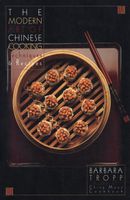Advertisement
Ginger, Fresh
生薑 mandarin: sheng-jyang; Cantonese: sang-gung
Published 1982

Fresh ginger (Zingiber officinale) is a mainstay of Chinese cooking. Ginger and scallion, soy sauce and rice wine, two yin-yang complementary pairs of seasonings, are the very foundation of Chinese cuisine. One cannot cook real Chinese food without fresh ginger, and I do not think I am overstating the case.
Finding fresh ginger is no longer the problem it was even five years ago in a Western market. Erroneously called “gingerroot” (for the antler-like horns or “hands” are in fact an underground rhizome or stem and not a root), fresh ginger pops up in every other suburban supermarket. The problem is to find it at its fresh best. Fresh ginger should be rock-hard, with a smooth, thin, tannish skin pulled tautly over the bulb, and only then will the gold inner flesh (which is sometimes tinged at the edge with green) be properly spicy-clean on the tongue. If the skin is shriveled and the bulb is soft or badly scarred, then the flesh will be weak-tasting. If you are forced to buy a wrinkled piece, one that has lost much of the vital moisture that gives ginger its spunk, then plan to use more of it than the recipe suggests.


